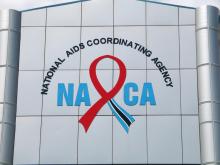
**THIS COURSE IS BEING REVIEWED AND UPDATED. LAUNCH DATE IS TBD**
There is an urgent need to scale up monitoring and evaluation (M&E) of HIV prevention programs serving sex workers, men who have sex with men, and transgender populations. Currently, there is limited information on the implementation of services for the prevention and treatment of HIV infection among these populations. A good monitoring and evaluation system can measure the availability of services, guide the implementation of services, and assess their effectiveness.
Objective
At the end of the course, learners will be able to:
- Describe the "8 Step Public Health Questions Model"
- Obtain information necessary for planning the intervention response and set targets at national and sub-national levels
- Explain how to implement a system to monitor program activities at the national and sub-national levels
- Describe how to evaluate whether prevention programs at national and sub-national levels are effective in reducing rates of HIV transmission among key populations
- Use the Checklist to self-assess available data and resources mentioned in the guidelines
- Know where to look for further information or technical assistance
Credits
This course is based on the collaborative work of the Operational Guidelines Team comprised of members of UNAIDS, WHO, UNFPA, UNODC, UNDP, Global Fund, ICASO, USAID, CDC, PEPFAR, DFID, and UNC.
Intended Course Audience
This course can be taken by individuals and groups of stakeholders interested in and working to improve programs for sex workers, men who have sex with men, and transgender populations. These individuals may include but are not limited to:
- Country managers of HIV program (Government)
- Country directors of national NGOs
- M&E focal persons at National and Sub-National Levels
- National or sub-national surveillance units
- Donor agencies
- Global agencies (such as the UN agencies, Global Fund, World Bank, etc.)
Time
- 2 hours 30 minutes
Published/Updated
- Monday, May 6, 2013
